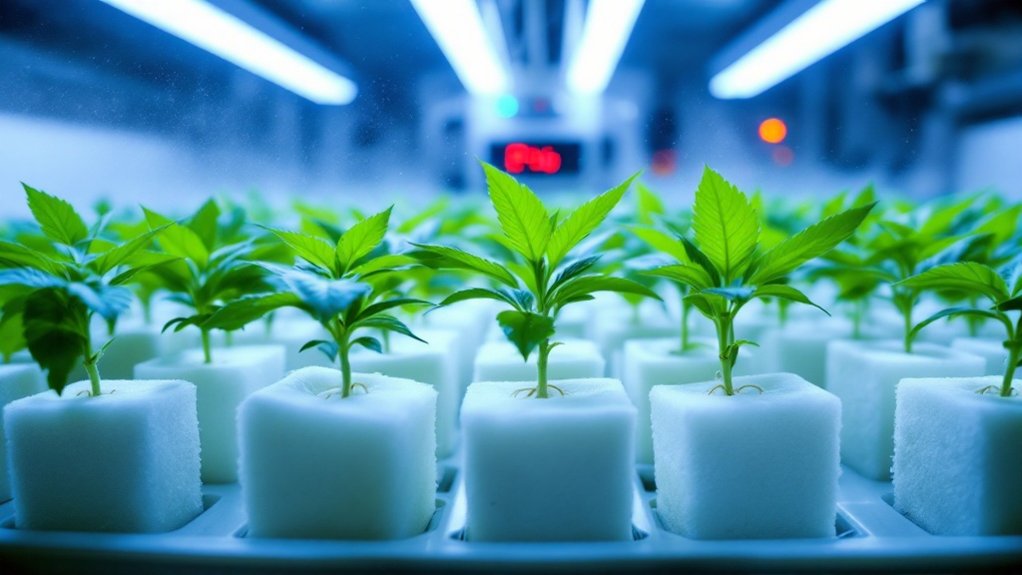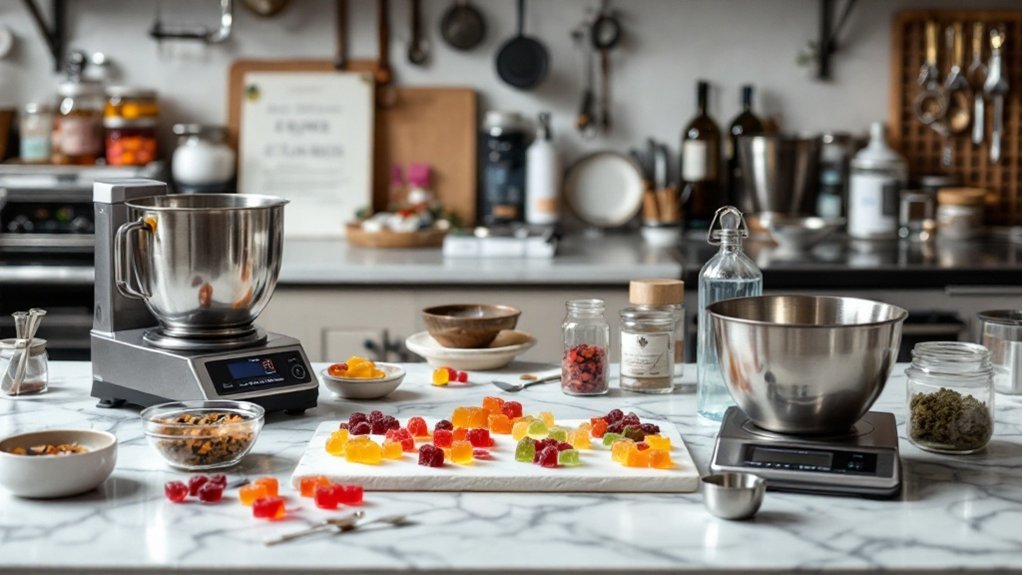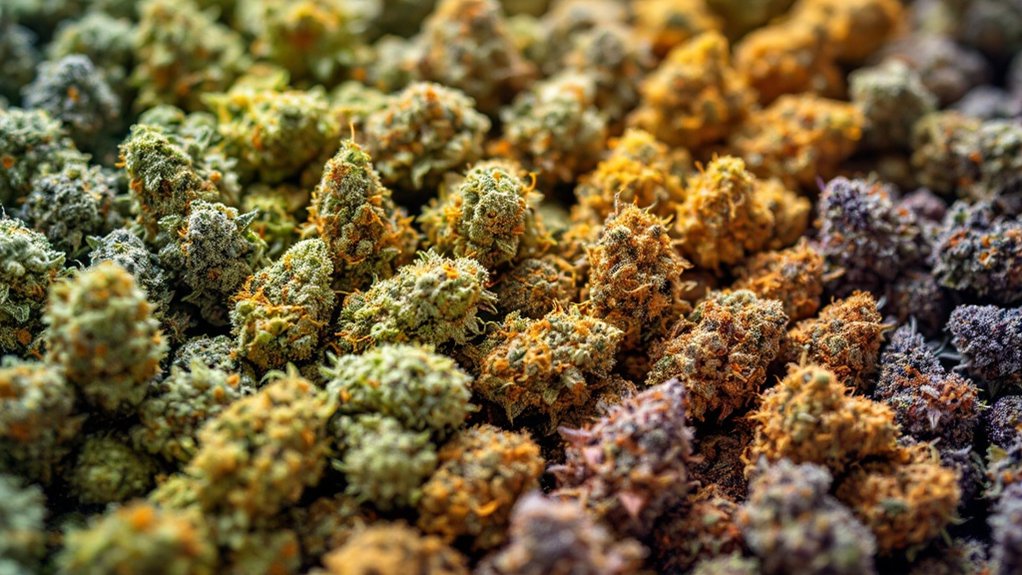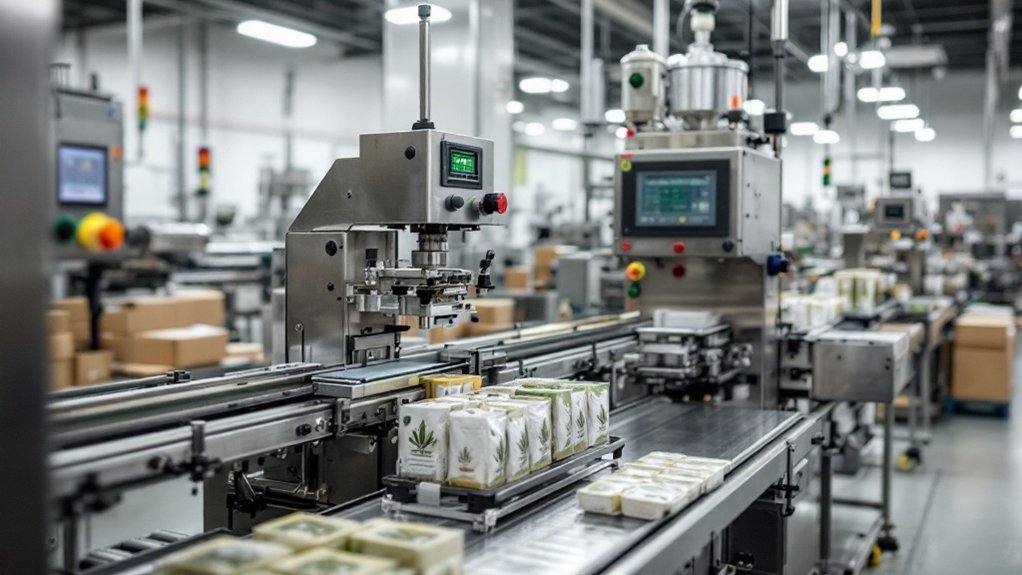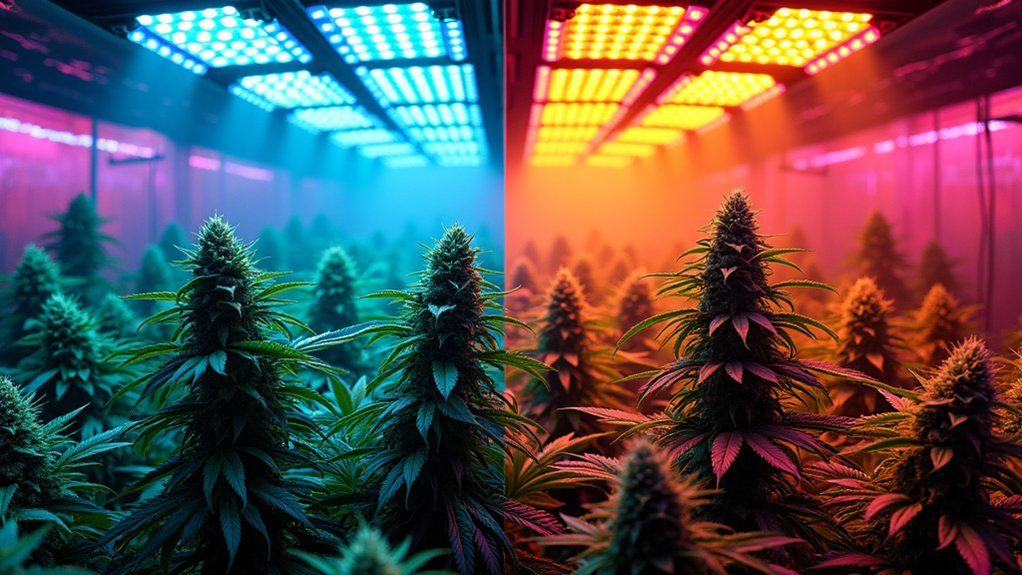Cannabis growers have three main propagation options: seeds, clones, or tissue culture. Seeds are cheap but unpredictable – half might be useless males. Cloning creates genetic copies from mother plants, ensuring consistent quality but requiring precise humidity control. Tissue culture, the high-tech approach, produces disease-free plants in lab conditions. Temperature stability is paramount; one spike can kill everything. Smart cultivators always start extra plants. The cultivation journey begins with these fundamental choices.
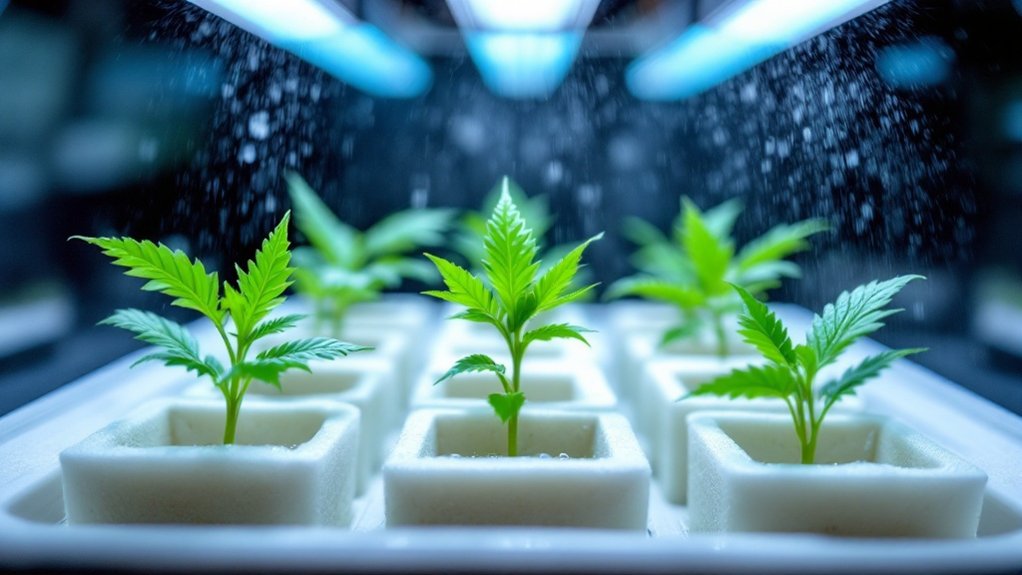
Propagating cannabis demands precision, patience, and sometimes pure luck. Growers have options – seeds, clones, or fancy tissue culture techniques. Each method comes with its own baggage.
Seeds need moist soil and cool fluorescent lighting to pop in about a week. Cheap and easy for hemp production. But here’s the kicker: unless you’re using feminized seeds, half your crop could be males. Useless for medical production. Some seeds never germinate at all. Dead investment.
Cloning remains the commercial gold standard. Snip cuttings from a mother plant, dunk them in rooting solution, and create genetic carbon copies. The appeal? Consistency. Every plant inherits identical characteristics in potency, yield, and resistance. Mother plants become valuable assets. They’re like genetic treasure chests yielding cutting after cutting for commercial operations.
Tissue culture represents the cutting edge. Literally. It produces disease-free plants with minimal contamination risk. The multiplication rates exceed conventional methods. Labs can selectively clone specific traits and grow numerous strains in tight spaces. It’s science-fiction farming made real.
Growth media choices matter tremendously. MS media, DARIA ind, Millers medium—all technical options for serious cultivators. Rockwool dominates as the sterile medium of choice for clonal propagation. Maintaining proper pH levels is critical to prevent nutrient deficiencies that can compromise propagation success. Some growers prefer aeroponic machines for rooting those leafy cuttings. Whatever works.
Environmental control separates the professionals from the amateurs. Clones represent the most vulnerable stage in cannabis development. They need babysitting – high humidity prevents drying, and consistent temperatures determine success rates. One temperature spike can kill an entire batch. Just like that.
Smart growers always start with more plants than needed. Losses happen. They remove unnecessary plant material to focus energy on root development. Commercial operations maintain mother plants producing lateral shoots for ongoing harvests. The regulated THC concentration of 0.3% serves as the legal dividing line between hemp and marijuana cultivation. Regular monitoring for fungal pathogens is essential during propagation as the high humidity environment creates ideal conditions for disease development.
The cannabis production cycle – propagation, vegetative growth, flowering, and drying continues year-round in professional facilities. No days off in this industry.
Frequently Asked Questions
How Long Does Cannabis Take to Root From Cuttings?
Cannabis plants typically root within 7 to 10 days under ideal conditions, though the complete process takes 1 to 3 weeks.
Wounded stems root about 1.5 days faster than unwounded ones, and certain cultivars like Ghost Train Haze root more quickly.
Synthetic hormones outperform organic alternatives by 2.2 times. Preserving leaf tips boosts success rates from 53% to 71%.
Environmental consistency is essential.
Can I Use Regular Soil for Cannabis Seedlings?
Regular soil typically needs modification for cannabis seedlings.
Standard potting soil often contains too many nutrients, a recipe for disaster with sensitive seedlings. Cannabis prefers light, well-aerated soil with pH between 6.0-7.0 and good drainage.
Experts recommend adding 20-50% perlite to improve aeration. Don’t use nutrient-rich “hot” soil.
Wait until plants develop 3-4 sets of true leaves before adding nutrients.
Rookie mistake? Overwatering. Let soil dry completely between waterings.
What’s the Ideal Humidity for Cannabis Clones?
Cannabis clones thrive in high humidity environments. Experts recommend 70-90% relative humidity for ideal results.
Some growers go a bit drier at 60-80%, but the consensus is clear: keep it humid.
Humidity domes are standard equipment in the process. Watch out though, hitting 100% humidity invites unwanted fungal guests to the party.
Temperature matters too, with 72-77°F creating the sweet spot for root development.
Should I Use Rooting Hormones for Better Propagation Results?
Rooting hormones double the success rate of cannabis propagation.
Research shows cuttings treated with auxin-based hormones develop more roots (1.17±0.63 per cutting), longer roots (1.93±0.53 cm), and heavier root mass (4.27±2.23 g).
Different cultivars respond differently, but success rates jump to 24-50.5% with hormone treatments. IBA at 3000 ppm works particularly well.
Nature’s alternative? Aloe vera. Less effective, but it’s something.
How Often Should I Water Newly Propagated Cannabis Plants?
Newly propagated cannabis needs watering every 2-3 days.
Young plants prefer light misting initially, heavy watering just drowns the little guys. Environmental factors matter. Temperature, humidity, and pot size all affect how quickly soil dries out.
Start with about 500mL per plant, increasing gradually as roots develop. Overwatering kills.
Let that topsoil dry between waterings. The plants will thank you.
